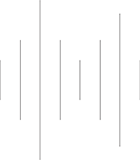About the Work
“In the Shoulder Season (Love Letter #2)” is a large-scale topographical poem created in Paonia, CO, using GPS apps to map my movements through the landscape so they could be read as digital words-on-terrain. By the time it was done, the work held 63 words created over 200 miles.
The words accumulated daily from March 25 to April 23, 2020, exhibited as “story” posts on social media and other sites. Each addition to the series was meant to stand alone while also taking on meaning in relation to the whole. I learned to write again, in responding to the signal, the weather, and other situational elements. As a mode of communication, it was slow and inexact; like me, the satellites don’t always understand precisely where I am.
My work often explores the progress of characters who feel their way through changing conditions in real-time. As a whole, “Shoulder Season” is a document of both stumbling process and predicament, first in relation to my mother who was experiencing a slow deterioration of her ability to use language (this was diagnosed as dementia soon after the project was completed). She followed the project closely at the time, writing each day’s words in her notebook to report back to me; it became a way—it remains a way—for us to communicate through scale and gesture, something visual in the realm of the unspeakable. This is entangled with the collectively tectonic aspects of an extended moment in time, created as it was amidst the quarantine shut-down of 2020 and echoing its embedded separations, grief, loss, and struggle for connection.
View images + text in sequence here (from Part II): https://vimeo.com/421427669
I acknowledge, with respect, that the land I walked on for “In the Shoulder Season” is the ancestral homeland and unceded territory of the Ute Peoples. It was also a site of trade, gathering, and healing for numerous other Native tribes. I pay my respect to and recognize the Indigenous peoples who have stewarded this land throughout the generations. I also accept that the land has long-held indigenous languages, ideas, bodies, creations, and movements, and still holds those languages and peoples today. I further commit to working to dismantle the narratives of settler colonialism and to honor the indigenous peoples who continue to live and uphold their sacred relations across their lands.
Practical Matters/ FAQ (2020):
What applications are you using?
I use different applications in the different parts of the project. MapMyRun is the app used in most of Part I, with the cooler palette, and Strava is the app used in Part 2, with the warmer palette.
How do you figure out how to make the words?
I sketch out the words on a map, work through variations and problems, and then carry an annotated map with me for each walk. I check my progress on the app (via my phone) as I go, and sometimes make improvisational changes according to surroundings, traffic, or the needs of a particular shape. The most perfect design can’t always anticipate how we see on this scale, in reading the finished word… I can expect a bit of error in translation, but if I’ve made a larger misstep I have to redesign and walk it again.
How often do you walk?
I’m walking every day for the duration of the project (30 days), limiting myself mainly to the landscape within town lines.
How far did you have to walk for individual words?
All the letters of a word (or words) must be connected to each other, which means I often have to retrace paths and account for other aspects of letter formation, as well as allowing a little buffer for start and end points. To give some perspective, the word “Hi” was about one mile from start to finish, and the word “PIECES” was about six miles. With the exception of part of one of the last posts, all the words were contained within the town limits of Paonia, CO. This doesn’t include distances to start points or from end points back to home (Elsewhere Studios).
How did you decide how the images would be displayed?
The images are all in portrait orientation (vertical cropping) because of my initial posting of them as Stories in Instagram and Facebook, but the images will be generated in horizontal orientation for other purposes.
What kinds of editing have you done with the images?
I haven’t color corrected or edited the images—those maps are generated directly from the app. From the maps, I’ve selected position, zoom level and and cropping of each word based on its context in the initial Story series. I also considered how the words themselves appeared within the greater landscape.
What is a “shoulder season” (as used in the title)?
The term actually comes from the travel industry, to indicate the period of time between high and low seasons of travel to a given destination. I also take it to mean a sort of in-between time as natural seasons overlap, for example, as we move from Winter into Spring, which might be characterized by erratic weather patterns. It is the “shoulder season” in Paonia right now, in fact! And finally, there are a number of conceptual interpretations regarding the “in-between” that I’m deploying in relation to the project’s content.
Besides the daily Story postings, what other plans do you have for the work?
I’m reformatting the maps to create larger digital images for screen display, and have high hopes that people can see them installed in a physical space sometime soon. Some of the images will also be animated in sequence for a film in progress, and I’ll be working again in this medium in the next few months.
<<<BACK TO project homepage & gallery

